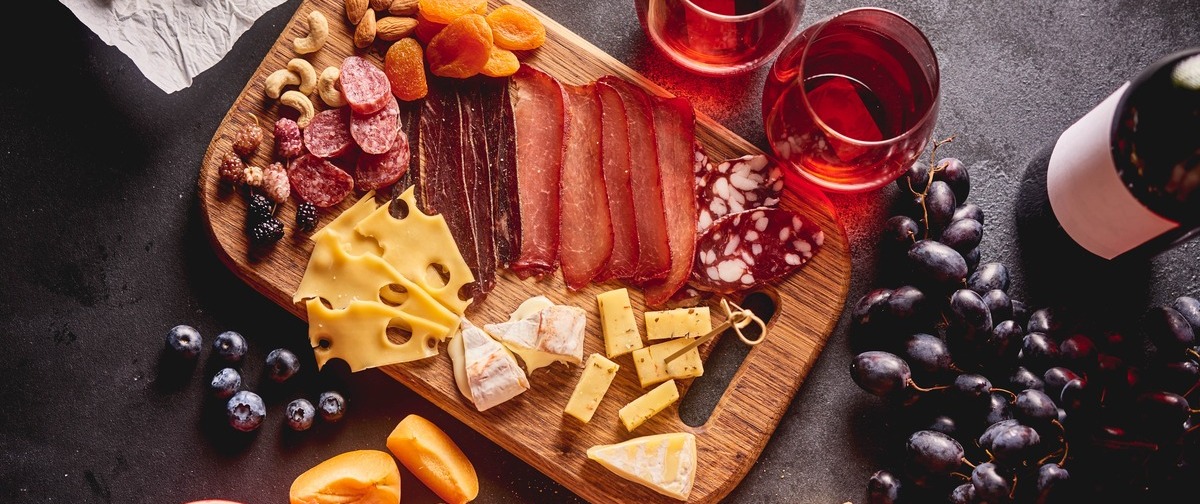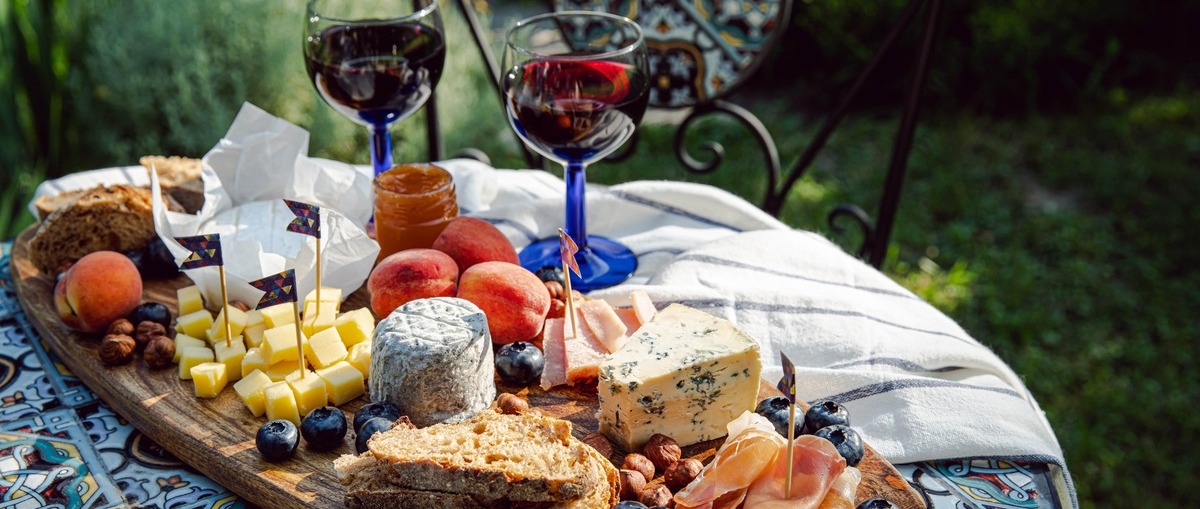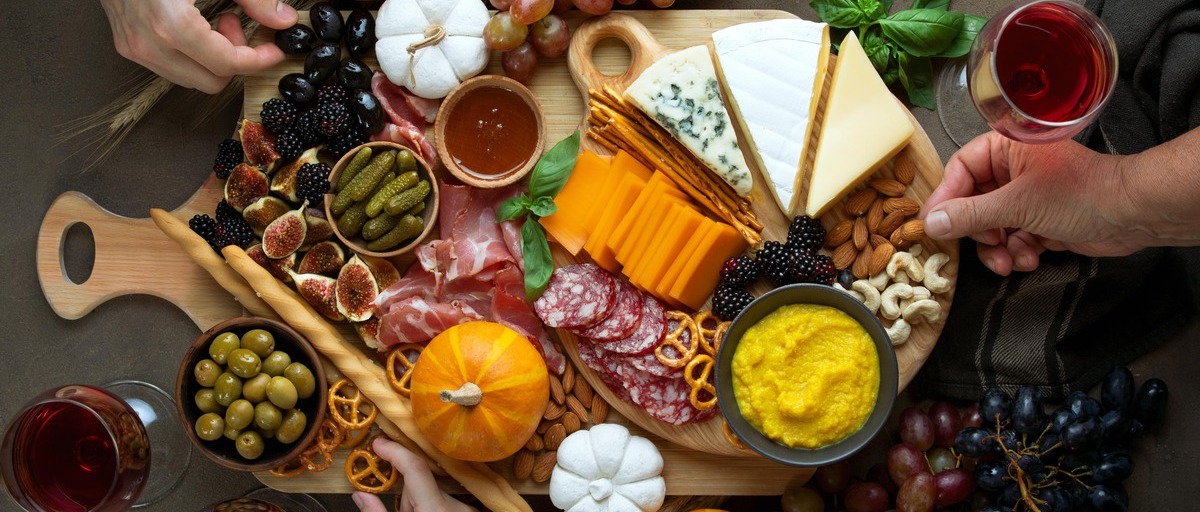Charcuterie Board: A Guide to Creating the Perfect Appetizer Plate
Charcuterie boards are all the rage right now. But what exactly is a charcuterie board? A charcuterie board is a plate of appetizers that usually consists of meats, cheeses, and bread. The beauty of charcuterie boards is that they can be tailored to fit any taste or preference. In this blog post, we will discuss the different ingredients that you can include in your charcuterie board, as well as some tips on how to create an aesthetically pleasing plate. Let's get started!
What is a Charcuterie Board?
Charcuterie is a French term for smoked, cured, and/or dry-aged meats. A charcuterie board is a delicious way to enjoy all of these meats at once! Charcuterie boards usually include a variety of meats, cheeses, fruits, and vegetables and are usually served on wooden or stone slabs.

The main idea of a charcuterie board is to bring people together around simple elegant food. It can also be quite easy and inexpensive to make depending on the types and quality of ingredients used. It also appeases the aesthetics and is the center of attention at the dinner table during a party. There are no set rules, just tips to make your charcuterie board a success.
History of the Charcuterie Boards
The word "charcuterie" is just a fancy way of saying cured meat. About 6,000 years ago, in ancient Rome, people started salting and smoking meats to preserve them because nothing from the animal should be wasted, not even the heart, lungs, kidneys, fat, or brain, according to the philosophy behind charcuterie.

In the 15th century, the phrase was used to designate stores in France that sold goods derived from pigs, including the animal's internal parts. The charcuterie board was invented by the French utilizing offal and various types of meat. But the traditional charcuterie board has gone a long way and is gaining popularity on the menus of contemporary fine-dining establishments.
How to Achieve the Right Aesthetics for a Charcuterie Board
It is the season for beautiful pairings to achieve the right look for your Instagram feed. Although it is heavily popularised, it still celebrates French cuisine. There are no hard and fast rules for creating a charcuterie board, but there are a few things to keep in mind.
Creating a charcuterie board is a great way to impress your guests! Here are some tips for creating the perfect charcuterie board:
- Make sure that there is an assortment of ingredients which includes your fruits, bread/crackers, nuts, cheeses, and meats. This is because variety adds colors and complexity.
- Know your Wines: It is to make sure the pairings are complemented and the meal is complete.
- Get creative: The placement of the ingredients is completely your choice, feel free to play around with the colors and sizes that will trigger the appetite and appreciate the aesthetics.
- Size matters: The bigger the board means more food and more attention.

Right Ingredients for the Right Flavors
In addition to the aesthetics, it is important to find the right pairings. Here are a few options of ingredients that will help you create the board of your dreams!
- Cheese: The variety of cheeses that can be added to your board. If you want semi-hard cheese, then, there is Cheddar, Gouda, and Monterey Jack. If you want to add semi-soft cheese options then, Havarti and Mozzarella. For soft, moist cheese options, you have Blue Cheese, Brie, and Ricotta. For hard cheese options, you have Parmigan, Asiago, Iberico. And lastly, soft cheese options, there are Goat and Morbier.
- Wine: The ideal match is wine and cheese. Choosing them based on similar qualities is ideal for a well-rounded meal. Consider pairing a strong-flavored cheese with a full-bodied red wine. Similarly, match a mildly flavorful white wine with soft, delicate cheese. To find the perfect wine and food combo, experimentation is essential. Here are a few options, for semi-hard cheese options you may use Chardonnay, Syrah, and Garnacha. For semi-soft cheese options, you may use Pinot Noir, Pinot Gris, and Zinfandel. For soft cheese options, Merlot and Moscato may be used. For hard cheese options, use Cabernet Sauvignon, and Cabernet Franc and finally for the remaining you may use Sauvignon Blanc.
- Meats: The go-to meats for the perfect charcuterie board that adds the right kick of flavors are Italian meats which include Salami, Prosciutto, Coppa, and Pepperoni. Excellent choices include Jamón Ibèrico and Chorizo from Spain because they are the most flavorful of all the meats and are best suited as finger foods, most people use pork and beef for charcuterie boards.
- Bread/Crackers: To balance out all the flavors, having some warm butter to complement the bread or some salted crackers is a great addition to round out the flavors.
- Fruits & Nuts: An assortment of dried fruits and fresh fruits like apricots, strawberries, raisins, grapes, blueberries, cherries, etc. Nuts like pecans, walnuts, pistachios, and almonds.
- Chocolates: To complement your fruits and nuts, a selection of dark chocolates, milk chocolates, or white chocolates depending on the strength of the flavors and richness of the wine.
The last element of the charcuterie board is the garnish, which appeals to the aesthetics. Using flowers like roses and herbs like thyme, as well as jams and sauces, can spice up the board and bring it to life!
All in all, charcuterie boards are a fantastic way to show off your culinary skills and impress your guests, and a great snap for your socials. With a little bit of planning, you can create a board that is sure to please everyone. You create the best board with the highest quality easy to work with ingredients, at affordable prices. So what are you waiting for? Get out there and start charcuterie-ing!
Learn about meats like Rillettes and salami which are great additional to charcuterie boards. Another viral version of charcuterie boards are butterboards, you can learn about them here at our blog page!













